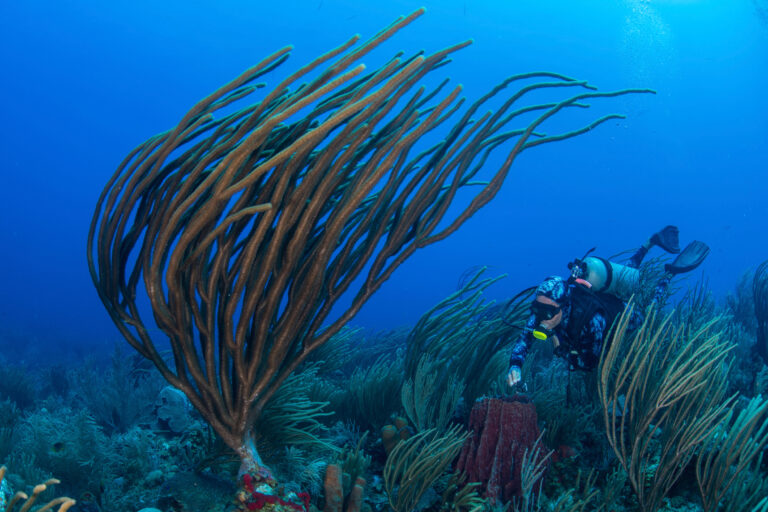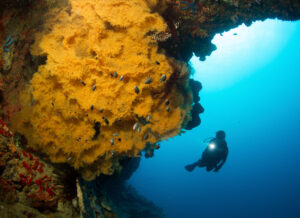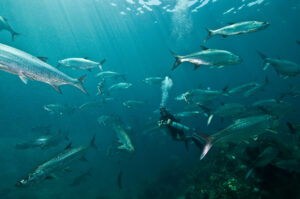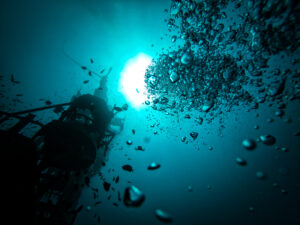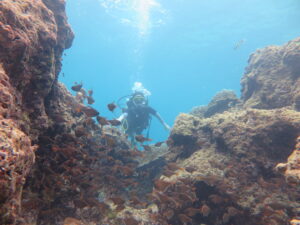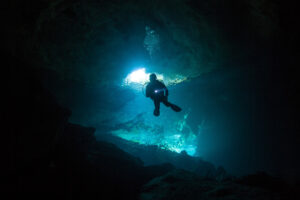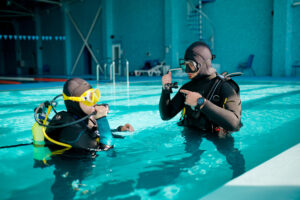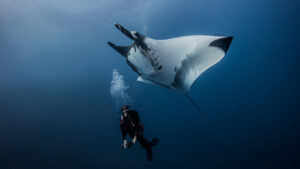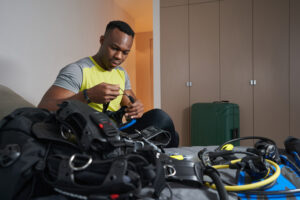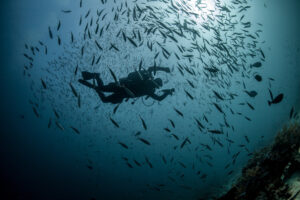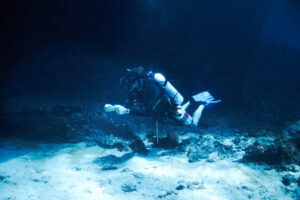What is Isobaric Counterdiffusion (ICD)?
Isobaric counterdiffusion (ICD) is a critical physiological process that occurs during scuba diving, particularly in technical diving scenarios involving the use of mixed gases. The phenomenon involves the diffusion of gases in and out of a diver’s tissues in response to changes in the composition of the breathing gas, while the ambient pressure remains constant. Understanding ICD is essential for divers to effectively manage their gas mixtures and minimize the risk of decompression sickness, also known as “the bends.”
Background
ICD was first identified by Hugh LeMessurier and Brian Andrew Hills in 1965 while studying decompression sickness in animals. They observed that when the composition of the breathing gas changed under constant pressure, certain gases could diffuse in and out of tissues at varying rates. This led to the discovery that ICD could potentially cause or exacerbate decompression sickness during decompression stops.
Mechanisms of ICD
During a dive, the body absorbs gases from the breathing gas mixture, which then dissolve into the blood and other tissues. As the pressure increases with depth, so does the amount of gas dissolved in the tissues. When the pressure is reduced during ascent, these dissolved gases come out of the tissues, forming bubbles. To avoid the formation of harmful bubbles, divers must ascend slowly and perform decompression stops.
Isobaric counterdiffusion occurs when a diver switches from one breathing gas mixture to another, typically involving a change in the concentration of helium and nitrogen, while remaining at a constant depth. Gases diffuse in and out of tissues at different rates, with helium diffusing more rapidly than nitrogen. When a diver switches from a gas mixture high in nitrogen to one high in helium (as is common during deep technical dives), nitrogen will diffuse out of the tissues more slowly than helium diffuses in. This can lead to the formation of bubbles, even though the overall pressure remains constant.
Types of ICD
There are two types of isobaric counterdiffusion: supercritical and subcritical. Supercritical ICD occurs when a diver switches from a helium-rich to a nitrogen-rich gas mixture at a constant depth. In this situation, the faster diffusion of helium out of the tissues can lead to the formation of bubbles in the blood and tissues. This type of ICD can cause a rapid onset of decompression sickness and is therefore considered more dangerous.
Subcritical ICD, on the other hand, occurs when a diver switches from a nitrogen-rich to a helium-rich gas mixture at a constant depth. In this scenario, nitrogen diffuses out of the tissues more slowly than helium diffuses in, potentially causing microbubble formation. However, these microbubbles typically do not lead to decompression sickness and are thus considered less dangerous than supercritical ICD.
Managing ICD in Technical Diving
Technical divers must carefully plan their dives to minimize the risk of ICD. This includes selecting appropriate gas mixtures for the dive, choosing the correct decompression schedule, and adhering to the guidelines for gas switching. Some key strategies for managing ICD include:
- Minimizing gas switches: Reducing the number of gas switches during a dive can help minimize the risk of ICD. Divers should carefully plan their gas mixtures and switch points to limit the potential for adverse effects.
- Gradual gas transitions: When switching gases, divers should consider using intermediate mixtures to reduce the abruptness of the change in gas composition. This can help minimize the risk of bubble formation associated with ICD.
- Appropriate decompression schedules: Technical divers should follow established decompression schedules and make any necessary adjustments for factors such as dive profile, gas mixtures, and individual susceptibility to decompression sickness.
- Maintaining constant depth during gas switches: Divers should ensure that they maintain a constant depth during gas switches to avoid any additional pressure changes that could exacerbate ICD.
- Monitoring for symptoms of decompression sickness: Divers should be vigilant for any signs of decompression sickness during and after a dive, such as joint pain, dizziness, or shortness of breath. If symptoms arise, divers should seek medical attention immediately.
- Training and experience: Divers should undergo comprehensive training in technical diving and gas management, and gain experience with different gas mixtures before attempting deep or complex dives. This will help them better understand the risks of ICD and how to mitigate them.
- Use of dive computers and dive planning software: Modern dive computers and planning software can help divers select appropriate gas mixtures and decompression schedules, and monitor their adherence to these plans during the dive. These tools can be invaluable in managing the risks associated with ICD.
- Buddy system: Diving with a partner can provide an extra layer of safety, as both divers can monitor each other for signs of decompression sickness and assist with gas switches or emergency situations.
Key Takeaways
Isobaric counterdiffusion is a complex physiological process that can pose significant risks to divers, particularly those engaging in technical diving with mixed gas breathing systems. By understanding the mechanisms and types of ICD, and implementing strategies for managing these risks, divers can safely enjoy the challenges and rewards of deep and mixed gas diving. It is essential that divers receive proper training and education in gas management and ICD, and use this knowledge to plan and execute their dives with caution and care.

